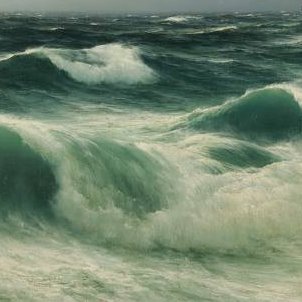Emile Friant, Alone
Alfred Guillou. Farewell
Rowland Wheelwright, The Enchanted Shore
Paintings about the sea: seascapes, maritime or nautical painting, marine art, coastal scenes.

Her recent paintings of water have struck a chord with the public: people are willing to wait two years to buy one.
Gallery director Ali Yeldham, suggests Emdur's work is so popular because everyone can relate to water.
"Her work is very therapeutic," says Yeldham. "It evokes calmness, a stillness. When the gallery is hung with her paintings it becomes soothing and tranquil. After September 11, we found people would come in just to be around them, to seek some solace. They have that effect."
Even though artists have always painted water, Emdur has developed a unique way of rendering liquid landscapes.
"They were captivating images. I knew there was something very special about them," says Yeldham. "Martine's paintings evoke the memories of childhood, of past experiences so many of us have had at the seaside, in that place."
Her shows have moved away from the figurative and have become more about the water itself. The refracted light. The movement.
"It's just water. No peripherals. I've spent a really long time trying to learn about how it all flows and how to paint it. The patterns. The flow, the light going through it. The circles of light in the water. It's hard to describe.


 Sir John Everett Millais, 1829-1896, The Boyhood of Raleigh.
Sir John Everett Millais, 1829-1896, The Boyhood of Raleigh.